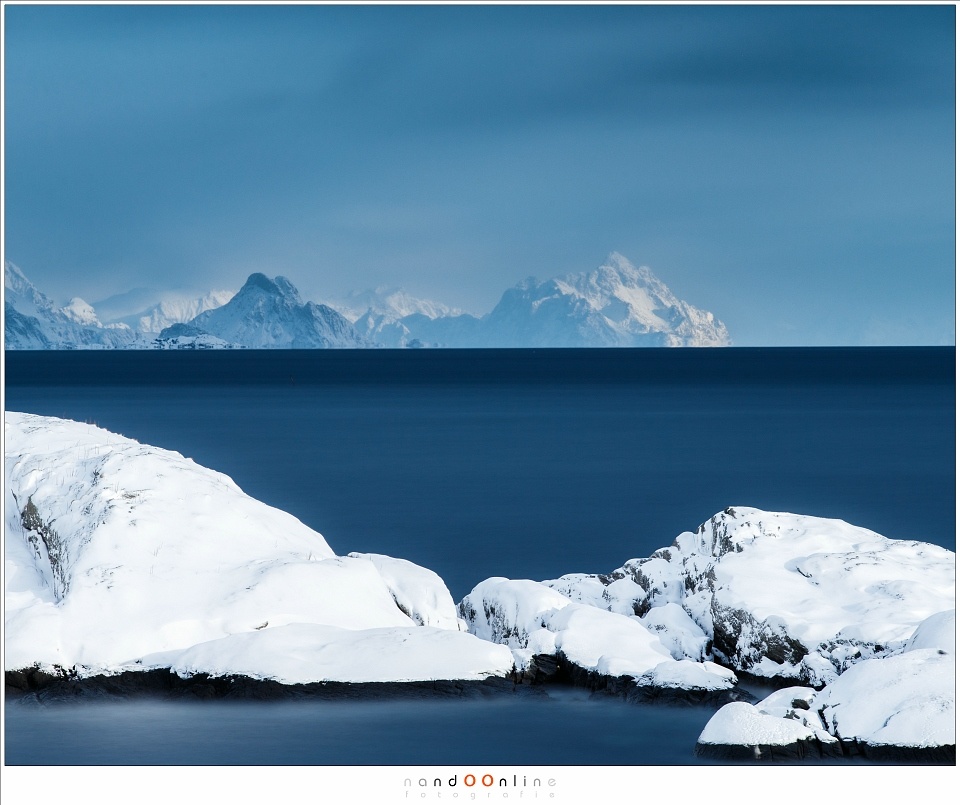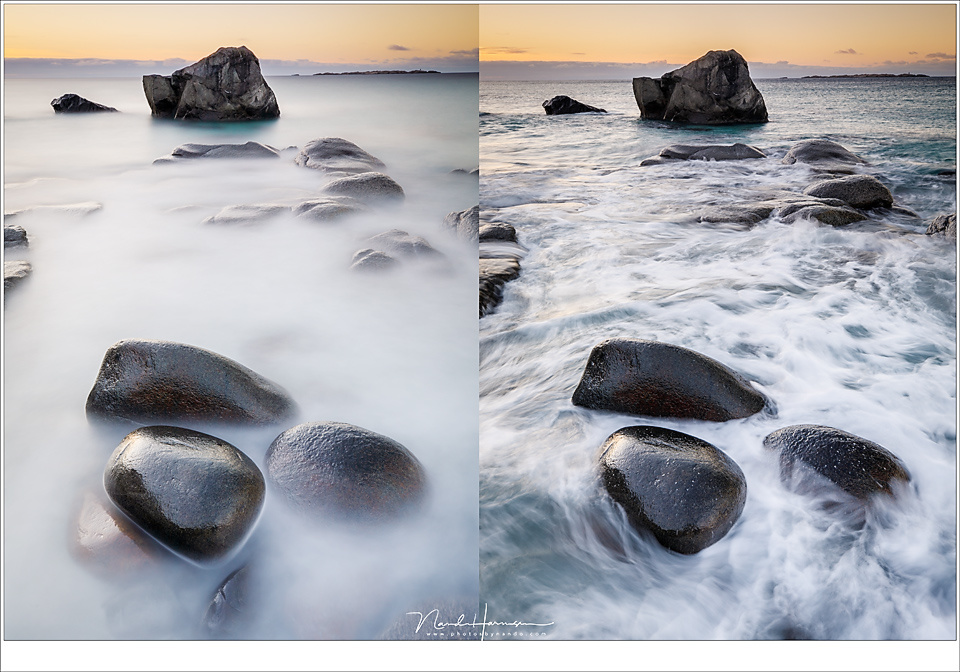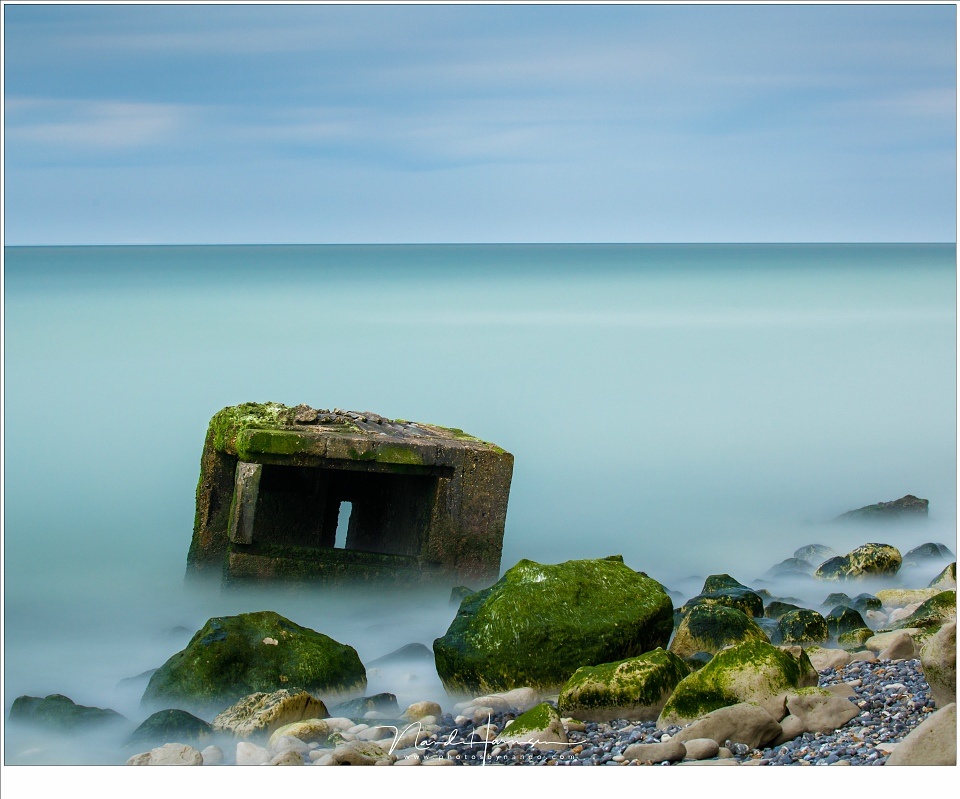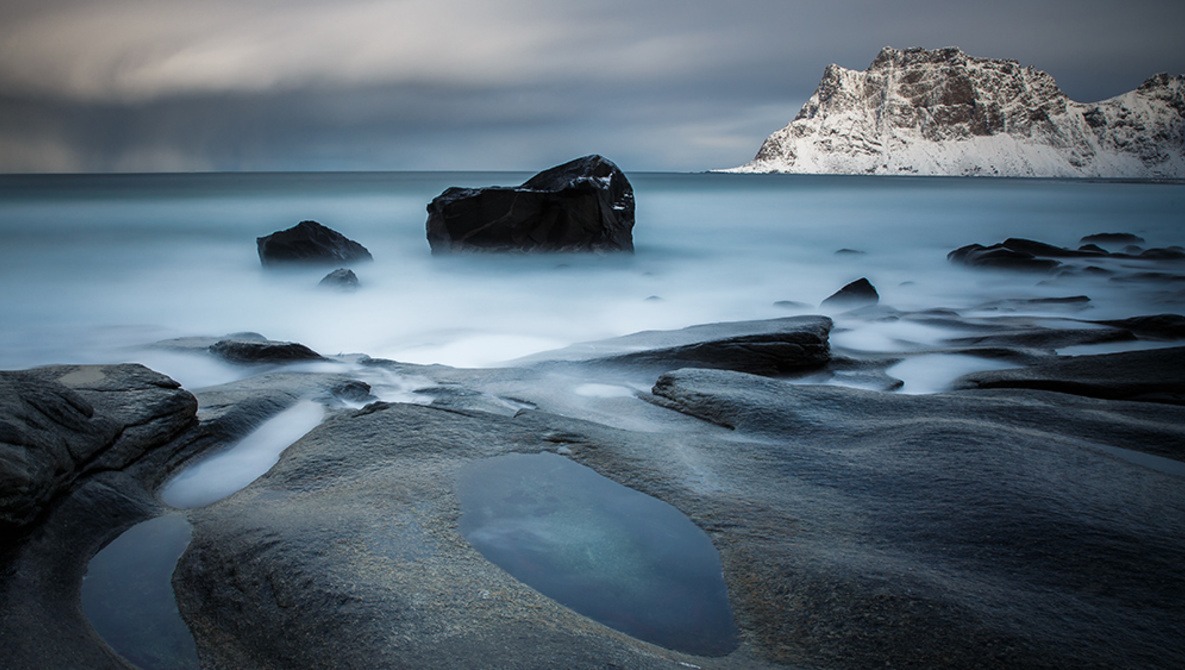You saw that wonderful long exposure image on the internet, with a smooth water surface and moving clouds in the sky, and you thought; I want to shoot images like that. So you invested in a dark neutral density filter that makes it possible to shoot with shutter times that are 1000x longer. Now you can start making those long exposure images.
Shooting long exposures is very popular. Many photographers have a filter system for square filters, or they use the round filters that are placed directly on the lens. I too have started with those dark neutral density filters because I liked those photos a lot. I bought a Lee Big Stopper and used it for many years. Recently I changed these filters for the much better Kase Wolverine filters, for which I wrote an article about. But no matter what brand of filters you use, it basically comes down on extending the shutter time long enough to smoothen out the water.

Rough water surfaces can be smoothed out completely if you make the exposure time long enough. Moving clouds are also affected, of course. (Canon EOS 1Dx EF100-400L @ 200mm | ISO100 | f/8 | 122 sec with Lee Big Stopper)
Creating these smooth water surfaces can divide the photo community in two groups. Or you hate it, or you love it. I often get the feeling there is no in-between. And indeed, it is a kind of photography that must suit you, otherwise you are better off without the use of these filters.

Photographing the waterfall Føssa at the Faroër Islands turned out to be a chalenge due to falling rain and ever changing winds. (Canon EOS 5D mark IV EF16-35L @ 16mm | ISO200 | f/11 | 30 sec with Lee Big Stopper)
It is not only large water surfaces that can be smoothed, also mountain streams and waterfalls can be photographed with these dark filters. During my workshops participants often reach for their ND64 or ND1000 filter without hesitation, or without thinking about the effect these filters will produce. They seem to be eager to use their expensive filter, because they bought it to shoot moving water.

I changed the Lee Big Stopper for the Kase ND1000. Both extend the exposure time a thousand times. These filters are so dark, you cannot see through the optical viewfinder, but you can use the liveview function with exposure simulation turned on, or the electronic view finder (EVF)
During one of my presentations someone mentioned about smooth water surfaces, that it doesn’t show the reality. And perhaps that is true. But when I showed a picture with a waterfall that was frozen still by a fast shutter time, some other person in the group made the remark that this wasn’t reality also. This simple conversation during that presentation strengthened my believes, that the truth is somewhere in-between and it eventually lead to this article. I want to give the advice to think carefully what it is you want to show in your image. If you have made a decision on how the water must appear, than it is time to think which filter you will need to achieve that goal. So don’t grab for that 10 stop neutral density filter because you own it, but because you need it to end up with the photo you want to have.

The famous beach of Uttakleiv on Lofoten with a smooth sea due to a long exposure. It looks really tranquil and the water between the rocks looks almost like fog. (Canon EOS 5D mark IV EF24-70L @ 35mm | ISO100 | f/11 | 30sec with Lee Big Stopper)
If you want an image of a sea surface that has been smoothened out, it is quite simple. Use a 10 stop neutral density filter, or even an extreme 15 stop filter to reach shutter times that are between two and five, ten, or fifteen minutes. Be careful though; don’t make the shutter time longer than necessary. If the water is already smooth in two minutes, it is not necessary to make the exposure time much longer. So don’t use a 15 stop ND filter because you have it in your bag, if a 10 stop ND filter can do the trick also.

The Lighthouse 'Paard van Marken' in the Netherlands. Really long exposure times are perfect for a minimalistic approach. (Canon EOS 1Dx EF24-70L @ 24mm | ISO100 | f/11 | 121sec with Big Stopper)

It is of no use to extend your exposure too much. The water cannot get smoother than smooth. But it can be of use when you want to capture cloud movement. How long the exposure must become, depends on the wind (Canon EOS 1Dx EF24-70L @ 24mm | ISO50 | f/22 | 480sec with Haida ND32000 (15 stops))
If you still want some movement visible in the water, an extreme ND filter is not necessary. That is why it could be wise to have a set of ND filters available, like a 3 stop, 6 stop and a 10 stop, so you can extend your shutter time exactly to the length you need.
The way to work is quite simple. Look at the water, the way it is moving, and the speed in which it is moving. Take the focal length into account and the distance, because that also has its effect on how the movement will show up in the image. If you have done this, try to anticipate the shutter time you need to get the effect you want to achieve. By looking at the exposure without a filter, you can calculate how much stops light you need to block, and you know which filter you must use.
If you are searching for complete smooth water, you just have to make the exposure very long. But if you want to catch the strength of the water, the movement and dynamics of the scene, you need to set the shutter speed exactly right.

Choosing the right ND filters depends on the effect you want to accomplish, and the light situation. Use a dark ND for misty water, use a less dark filter to catch the dynamics. At the left is shot with the Big Stopper (120 seconds), at the right with a 0,9ND filter (0,5 sec)
Most of the times the surf will take between 4 seconds and ¼ of a second, depending if you catch the incoming wave, or the outgoing water flow. Choose the right ND filter to get the shutter time you want, and perhaps you don’t need a filter at all. So don't use it because you have one, but only when you need it to get the image you want.

At first I thought on using my Big Stopper, but when I saw the dynamics of the water, I decided not to use any filter accept a gradient ND filter. (Canon EOS 5D mark IV EF16-35L @ 16mm | ISO50 | f/16 | 1/3sec without a ND filter)
When photographing waterfalls you can also choose to smooth out the water, or to keep details in the falling water. Shutter times between 15 seconds and 1/15 of a second can do the trick, depending on the length of the waterfall, and the effect you want to have. This also applies with mountain streams, which can have a lot of speed variations.

A secret, hidden valley in France, where dozens of small waterfalls can be found. Perfect for long exposure. Because it is in a forest, you often don't need a dark ND filter. (Canon EOS 5D mark IV EF16-35L @ 16mm | ISO100 | f/10 | 1.3sec with Lee 0,9ND filter)

Cascade de la Beaume in France with a long exposure. I did not use an extreme exposure because I wanted to keep a bit of detail in the water. (Canon EOS 5D mark IV EF16-35L @ 16mm | ISO100 | f/8 | 1.3sec with Lee 0,9ND filter)
So next time you stand next to a waterfall, mountain stream or on a beach, don’t grab for the darkest filter because you have one in your bag, but think of the effect you want to capture and use the filter that can help you reach that goal. But making that choice can be difficult, I found that out from my own experiences. That is why I would advise to make both shots, one with a long exposure and one with a faster slow shutter speed. This way you have both and you can make that decision later. I have collected a couple of images from my archives with an explanation what kind of filter I used and why. Just for inspiration purposes.

The North Sea during a South-West storm. I wanted to catch the strength of the waves hitting the poles and beach. For that I used a 3 stop ND to extend the exposure time enough to capture details in the water (EOS 1Dx EF24-70L @ 57mm | ISO50 | f/11 | 1/3sec with Haida 0,9ND)

Remains of world war two at the coast of France during high tide. A long exposure made a smooth sea surface (EOS 5D mark IV EF100-400L @ 100mm | ISO200 | f/11 | 120sec with Haida ND32000 (15 stops))

The North Sea at Opal Coast, shot with a long exposure to make the image a bit abstract. I did not use a ND filter because it was twilight already. (EOS 5D mark IV EF70-200L @ 200mm | ISO50 | f/22 | 8 sec without any ND filter)

I wanted no detail in the waterfall, just a curtain of falling water. behind the rocks and grass. For that I used the Big Stopper. (EOS 5D mark IV EF70-200L @ 95mm | ISO100 | f/11 | 30 sec with Lee Big Stopper)

Mahon Castle, also know as the castle of Ambleteuse, in France. I wanted to catch the incomming tide with a bit of movement in the water. A ten stops ND filter was perfect for this (EOS 5D mark IV EF16-35L @ 16mm | ISO100 | f/16 | 30 sec with Lee Big Stopper)

A mussel bed at the Opal Coast during twilight. I did not want an exposure time that was too long - it became low tide and the water wasn't that wild. Because of the evening twilight I did not need any ND filter at all. (EOS 5D mark IV EF16-35L @ 16mm | ISO100 | f/16 | 10 sec without any filter)

The island Tindhólmur at the Faroër Islands, A longer exposure made the movement of the water and clouds smooth, yet visible. (EOS 5D mark IV EF24-70L @ 35mm | ISO100 | f/8 | 90sec with Lee Big Stopper)

For this famous Dutch bridge I wanted to go extreme, to catch the movement of the water. I needed to stack two ND filters for that. (EOS 5D mark III EF100-400L @ 400mm | ISO100 | f/8 | 240sec with Lee Big Stopper and Lee 0,9ND filter)

Receding water on the beach promises amazing patterns. But the exposure cannot be too long or you will loose the details. I did not use a ND filter, just a gradient ND and a polarizer. (EOS 5D mark IV EF16-35L @ 16mm | ISO100 | f/13 | 1.3sec)
I would like to hear what kind of affects you like the most. Is it smooth water or do you prefer to see the movement and strength of the water, and what kind of ND filters do you use to achieve that goal? I love to read about your preference in the comment below.







Nando: very good advice and excellent examples.
Thank you :)
I must be one of the strange people who like both depending on the scene.
It does not make you strange.
Hi, What is that filter holder you're using with the red knob? Thank you.
It is the Kase filterholder. I wrote a review about it, here on Fstoppers
https://fstoppers.com/originals/review-kase-filter-system-and-why-i-stop...
Thank you! The one I have is a bit of a piece of junk (the tightening knob is on the top/bottom and I like the side knobs much better) so I am looking to upgrade. Great write-up on the Kase too. You've helped me find my new filter holder.
I don't have any filters yet as I'm fairly new to photography. Just wanted to chime in and say that I really liked your article and the photos =)
Cheers.
Thank you very much, Carlos. Appreciate it :)
What do you think about a variable ND filter?
I never used these kind of filters, but because these are based on two rotating polarization filters you end up with a dark cross in the picture when rotating too far, you have to be aware of that. Quality of these filters is often (much) less than the dedicated filters.
But I guess these can be useful for trying out, and it may give satisfying results. If you like the long exposure I eventually would advise to invest in a couple of decent ND filters, like a ND8 and a ND64 or ND1000
Thank you for this article! I'm hoping to introduce ND filters into my photography so your article was very helpful!
Glad to be of help
Good luck with your filters, and enjoy the use